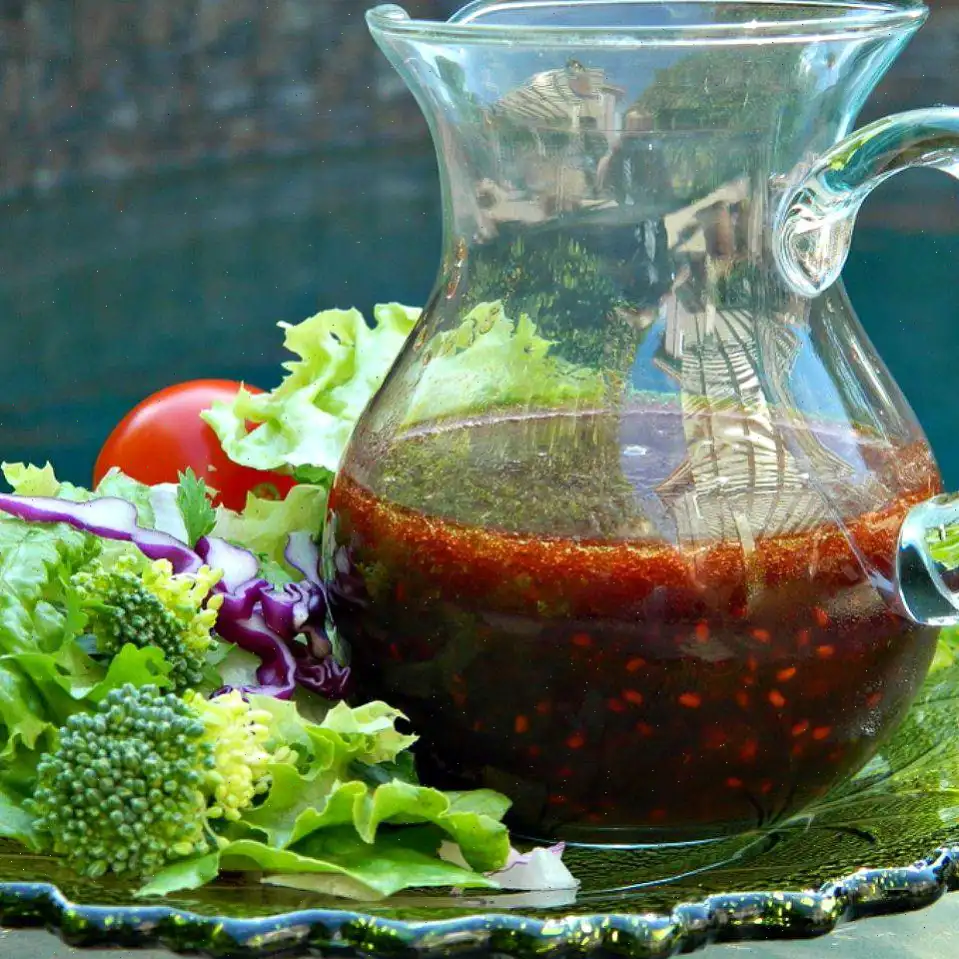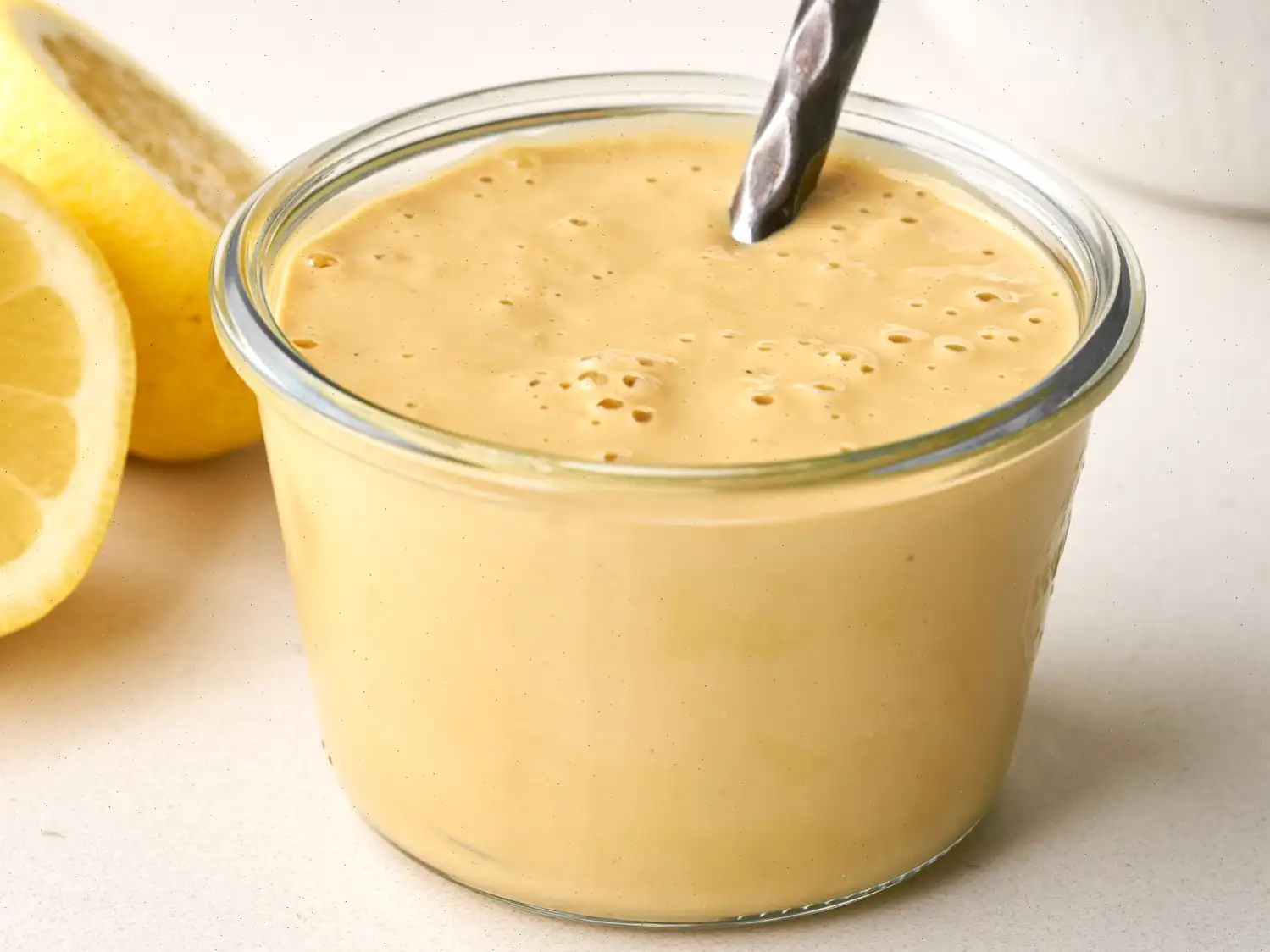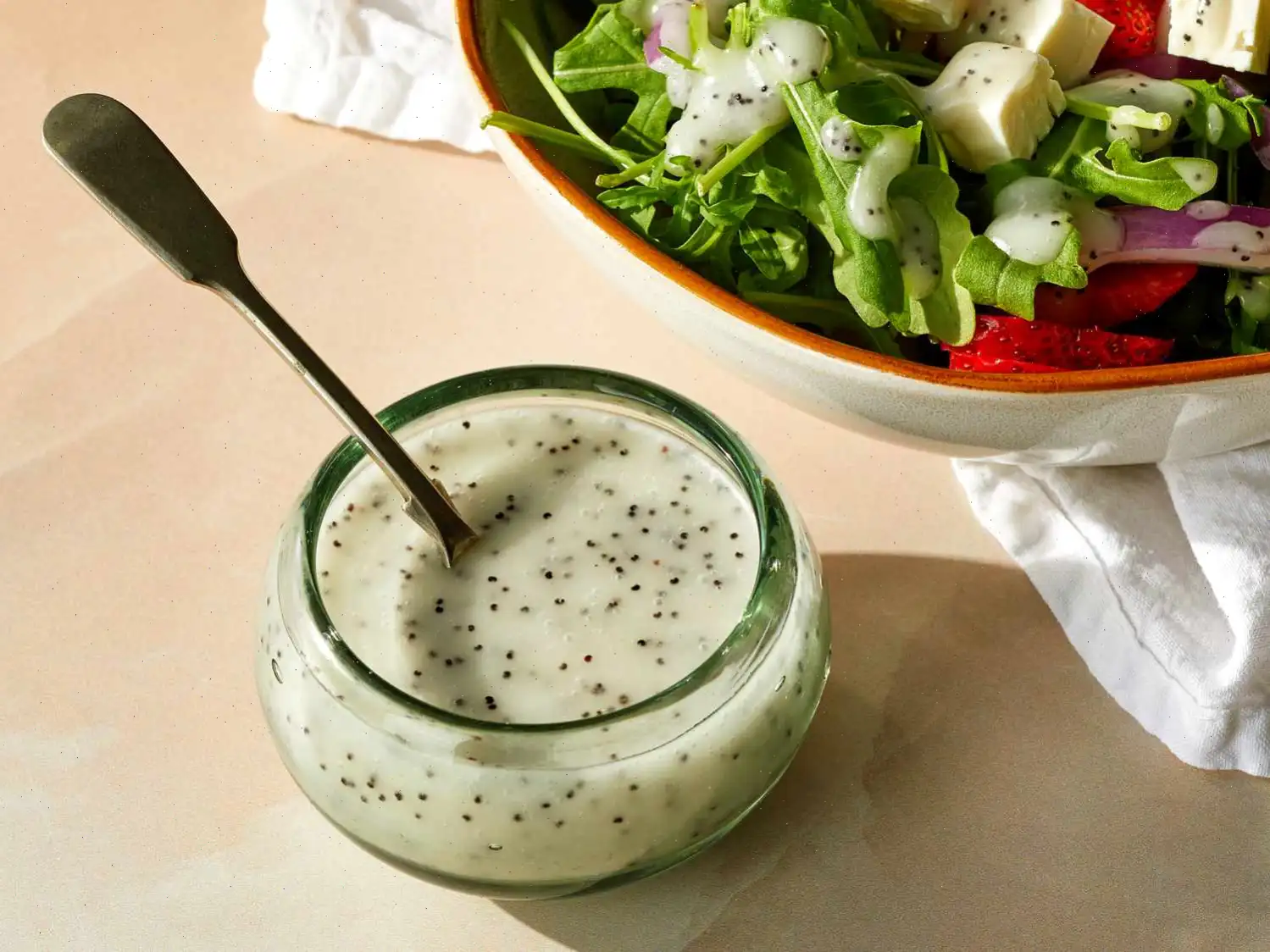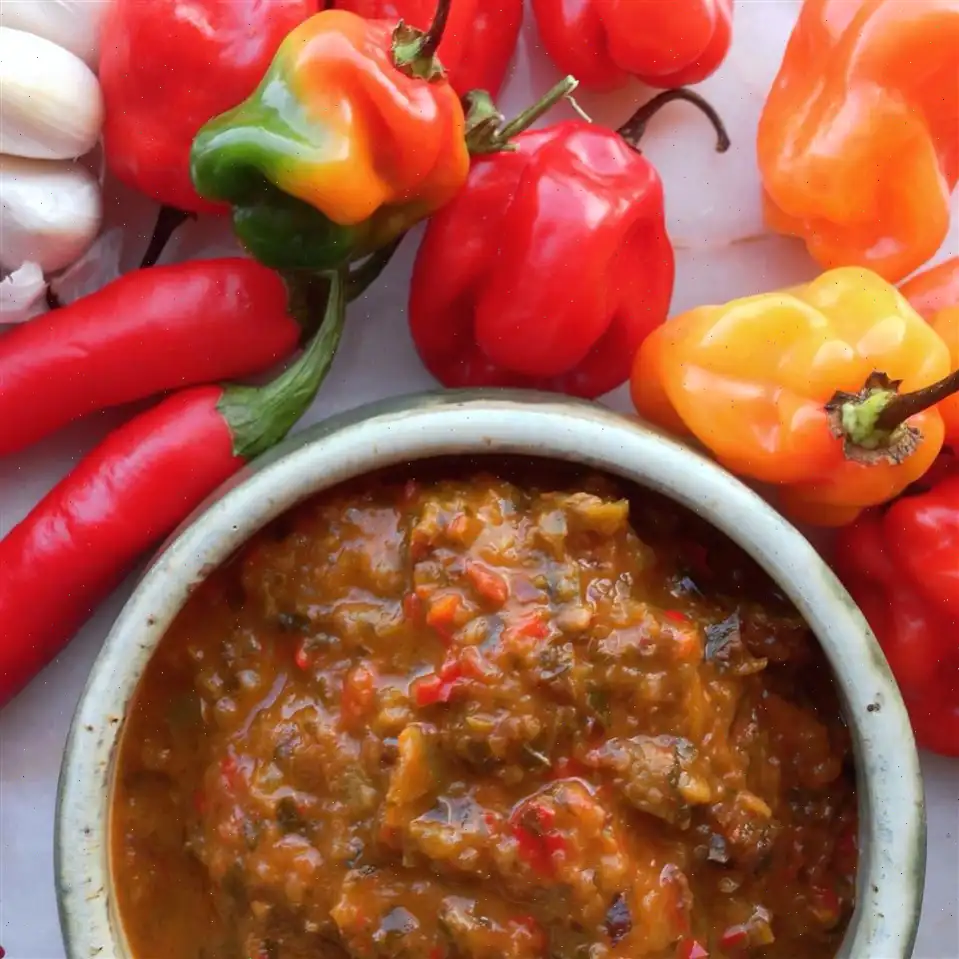
Tamarind Chutney Recipe
Ingredients
- 1 tablespoon canola oil
- 1 teaspoon cumin seeds
- 1 teaspoon ground ginger
- teaspoon cayenne pepper
- teaspoon fennel seeds
- teaspoon asafoetida powder
- teaspoon garam masala
- 2 cups water
- 1 1 cups white sugar
- 3 tablespoons tamarind paste
Directions
- Heat the canola oil in a saucepan over medium heat.
- Add cumin seeds, ground ginger, cayenne pepper, fennel seeds, asafoetida powder, and garam masala. Cook and stir for about 2 minutes, allowing the spices to release their flavors.
- Pour in the water, followed by the sugar and tamarind paste. Stir everything together.
- Bring the mixture to a boil. Once boiling, reduce the heat to low and simmer for 20 to 30 minutes, stirring occasionally. The sauce will turn a deep, chocolaty brown and should thicken to a consistency that can coat the back of a metal spoon.
- Note that the sauce will still be somewhat thin, but it will thicken further as it cools.
Nutrition Facts (per serving)
| Nutrition | Per Serving |
|---|---|
| Calories | 113 |
| Total Fat | 2g |
| Saturated Fat | 0g |
| Sodium | 3mg |
| Total Carbohydrates | 26g |
| Dietary Fiber | 0g |
| Total Sugars | 23g |
| Protein | 0g |
| Vitamin C | 0mg |
| Calcium | 9mg |
| Iron | 0mg |
| Potassium | 35mg |
* Percent Daily Values are based on a 2,000 calorie diet. Your daily values may be higher or lower depending on your calorie needs.
History and Origins: Tamarind chutney has a rich history rooted in South Asian cuisine, particularly in India. The tamarind fruit, known for its tangy flavor, has been used for centuries in culinary traditions across the Indian subcontinent. It was originally made as a way to balance the intense heat of Indian spices, with tamarind providing a cooling, tangy contrast to spicier dishes. Over time, chutneys evolved into a key accompaniment for a variety of dishes, especially fried snacks like samosas, pakoras, and even curries.
Regional Variations: Tamarind chutney is not only found in India, but also in other parts of South Asia, including Pakistan and Bangladesh, where regional variations are common. For instance, in Gujarat, tamarind chutney is often sweeter and thicker, using jaggery (unrefined sugar) for a more caramelized sweetness. Meanwhile, in southern India, the chutney can have a more pronounced sourness and spiciness, reflecting the different regional preferences for heat and tang. Additionally, in countries like Thailand and Mexico, tamarind is used in sauces and condiments, further showcasing its versatility.
How It Differs from Similar Dishes: While tamarind chutney shares similarities with other chutneys like mango or mint chutney, it stands apart because of its unique combination of sweet, sour, and spicy flavors. Mango chutneys are often sweeter and more fruity, whereas mint chutneys have a fresh and herby flavor. Tamarind chutney, on the other hand, uses tamarind paste, which provides a distinct tangy depth that balances the heat of the spices like cayenne pepper and garam masala. This balance of flavors is what makes tamarind chutney a quintessential part of Indian culinary culture.
Common Places to Serve Tamarind Chutney: Tamarind chutney is widely used as a condiment in Indian cuisine, served alongside appetizers like samosas, pakoras, or bhajis. It is also commonly paired with main dishes, such as rice, dal, and flatbreads like naan or chapati. In Indian restaurants, it often appears as a dipping sauce for fried snacks, adding an extra layer of flavor. Outside of India, tamarind chutney has become a popular accompaniment in Indian-inspired fusion dishes and is often found in vegetarian or vegan restaurants due to its plant-based ingredients.
Interesting Facts: Tamarind is not just known for its culinary uses, but also for its health benefits. Rich in antioxidants and vitamins, tamarind has been traditionally used to aid digestion, lower blood pressure, and even fight inflammation. The fruit's tartness also makes it a key ingredient in refreshing beverages like "agua de tamarindo" in Mexico and Central America. Interestingly, tamarind chutney can be made in different consistencies, from thin sauces to thicker spreads, depending on personal preference. Many cooks will adjust the sweetness or spiciness based on regional tastes or individual palates.
You can listen to this recipe in AI audio format. Simply click the play button below to listen to the content in a format that suits you best. It’s a great way to absorb information on the go!
FAQ about Tamarind Chutney Recipe
Comments
Ashley Anderson
09/06/2023 03:23:43 AM
Caution: Avoid heating your oil over medium heat, opt for a lower setting instead. When the spices hit the oil, an overwhelming sensation made it seem like my lungs were collapsing. The intense reaction made my children flee from the kitchen in panic, leaving me to finish cooking with a dish towel shielding my nose and mouth. Lowering the temperature for a similar dish later on eliminated this issue, indicating that the heat level may have been too high initially. Despite this, I am awarding this recipe four stars as it delivers the most delicious tamarind chutney I've ever tried. For those without tamarind paste, a tasty alternative can be created by soaking 1 tablespoon each of dried, chopped apricots, dates, and prunes in boiling water for fifteen minutes, then draining and pureeing them with a tablespoon of lemon juice.
Jason Allen
08/14/2022 04:39:29 PM
I discovered a simple way to elevate this recipe from a 4-star to a 5-star rating! I found it surprising that previous reviewers didn't mention the missing salt in the recipe. For an authentic taste, I recommend using black salt from an Indian grocery store. Additionally, I made a few other adjustments: I roasted the fennel and cumin in a dry pan and then ground them before proceeding with the rest of the recipe. I also added asafetida to the mix along with the water, as it brings a necessary flavor to the dish. However, be cautious, as its smell alone can be overwhelming. Lastly, instead of white sugar, I substituted jaggery (date sugar), which can be easily found online or at an Indian grocery store.
Paul Williams
01/13/2023 10:40:58 PM
The sauce did not thicken sufficiently even after cooking for twice the recommended time. Taking advice from other reviewers, I decided to add a mixture of cornstarch and water to help thicken it - ultimately using two tablespoons of cornstarch and two tablespoons of water. The recipe did not specify what to do with the seeds, so I strained them out before thickening the sauce. Despite these challenges, the dish turned out very flavorful and reminded me of the sauce served at my favorite Indian restaurant with their pakoras.
Gary Gonzalez
02/02/2025 09:34:33 AM
Rewritten review: This chutney was a delightful surprise! It tasted just like the one from a top restaurant. I suggest cooking it on medium-low heat to fully savor the aromatic spices without overpowering them. I noticed that the 1/2 tsp of cayenne pepper didn't stand out much once the chutney cooled, so if you prefer a spicier kick, consider increasing it to 3/4 or 1 tsp. Instead of 1 1/8 cups of white sugar, I opted for 1 cup of jaggery and added five pitted dates. I also tried thickening the sauce with a teaspoon of cornstarch dissolved in water, which worked well initially, but the chutney ended up too jelly-like the next day. I recommend using just 1/2 tsp of cornstarch or skipping it altogether. I substituted onion powder for asafoetida powder and skipped the fennel seeds to suit my taste preferences. To refine the texture, a quick blend with a hand blender would have been beneficial as the chutney was quite chunky and turned jam-like towards the end.
Edward Perez
10/14/2023 03:06:49 AM
I have been using this recipe for years, and I finally decided to write a review. The result is exactly like the tamarind chutney served in restaurants. In a typical Indian market, you can find various types of tamarind paste, but the one that comes in plastic wrapping and resembles molding clay works best, in my opinion. I prefer to use equal parts garlic and onion powder instead of asafoetida. Once cooked, I like to strain out the solids. This chutney pairs amazingly well with masoor dal and chapatis. I have also used it as a condiment for herb-roasted chicken.
Janet Brown
05/28/2025 07:33:31 AM
We visited an Indian restaurant for lunch and tried their mango chutney, which was overly sweet and fruity. For dinner at home, I prepared my own version with reduced sugar and added more ground red pepper. We loved the new balance of flavors. I simmered it longer to reach the suggested one and a quarter cups consistency (a test of patience), and as it cooled in the fridge, it thickened beautifully. We enjoyed it drizzled over samosas and it was absolutely delicious. Many thanks for the recipe.
Eric Thomas
09/29/2023 05:21:28 PM
This tamarind chutney is absolutely amazing! While it may take a bit more effort compared to cilantro chutney, the end result is truly worth it. I substituted olive oil for canola since that was what I had on hand, and made sure to toast the spices in the oil until their aromas were prominent. Adding water too early can dilute the flavors, so timing is crucial. I used onion powder instead of asafoetida, as some others suggested. Achieving the desired thickness was a bit of a challenge - despite simmering for an hour to reduce it, I eventually added a small amount of cornstarch (dissolved in hot water) to reach the perfect consistency. Honestly, you can't find a better quality chutney than this homemade one.
Rachel Lopez
10/03/2024 06:27:48 AM
Flavorful dish but deducting one star due to unclear instructions. It is advised to cook on low to medium heat to avoid burning the spices. Additionally, reducing the sauce without any additives may take 2-3 hours. I found that after 30 minutes of simmering, I had to increase the heat to achieve a low boil. Even after an hour of total cooking time, the sauce still needed further reduction, but I had to proceed with my other cooking. I ended up thickening it with cornstarch, compromising the concentration of flavors.
Paul Perez
08/18/2022 03:54:28 AM
Delicious! I stuck to the recipe but adjusted the water to 1.5 cups instead of 2 based on recommendations. The result was perfect. To balance the sweetness, I also incorporated an extra tablespoon of tamarind paste. The flavors now are fantastic!
Jason Gonzalez
12/24/2024 11:28:26 PM
I didn't make any alterations, and it turned out fantastic! My husband, who is from Ahmedabad, absolutely loved it.







